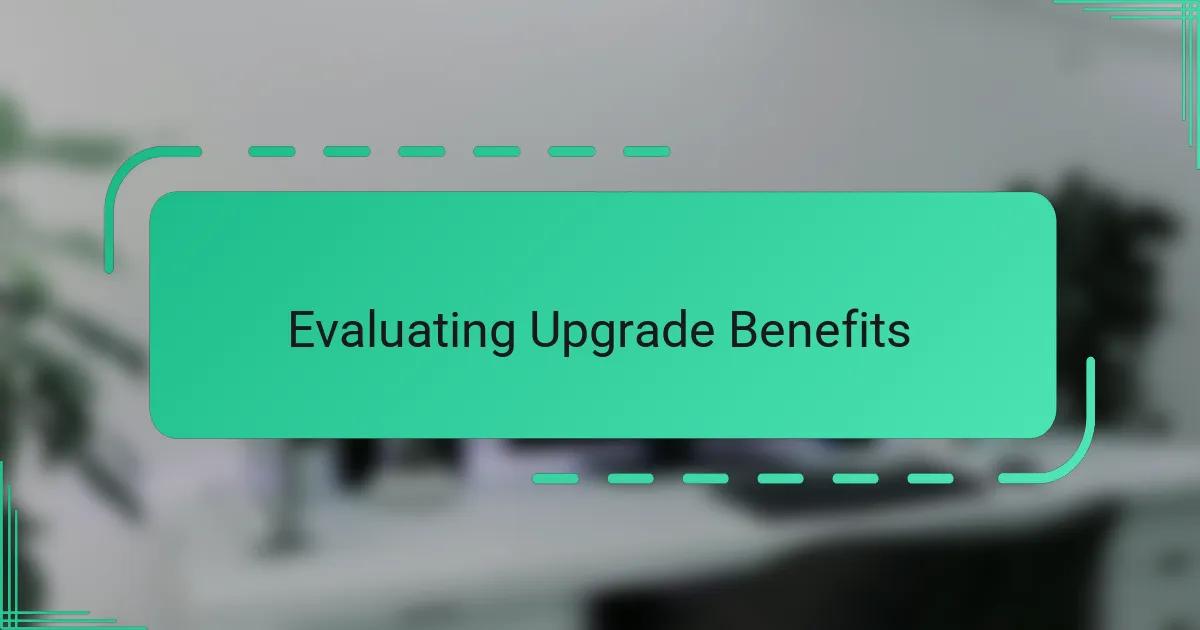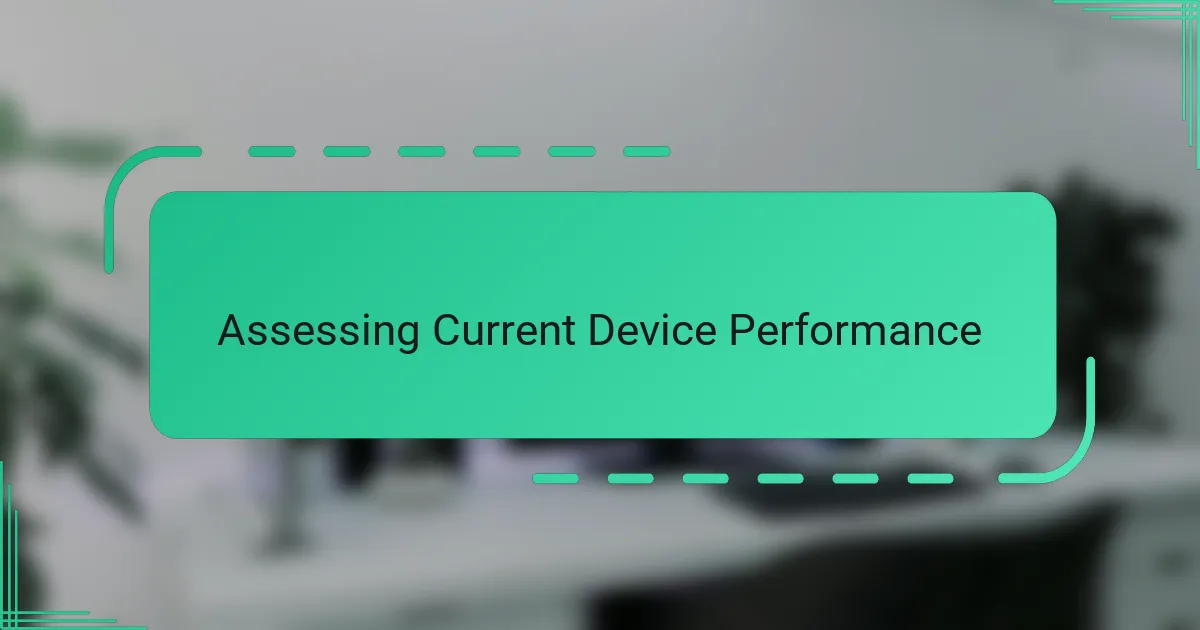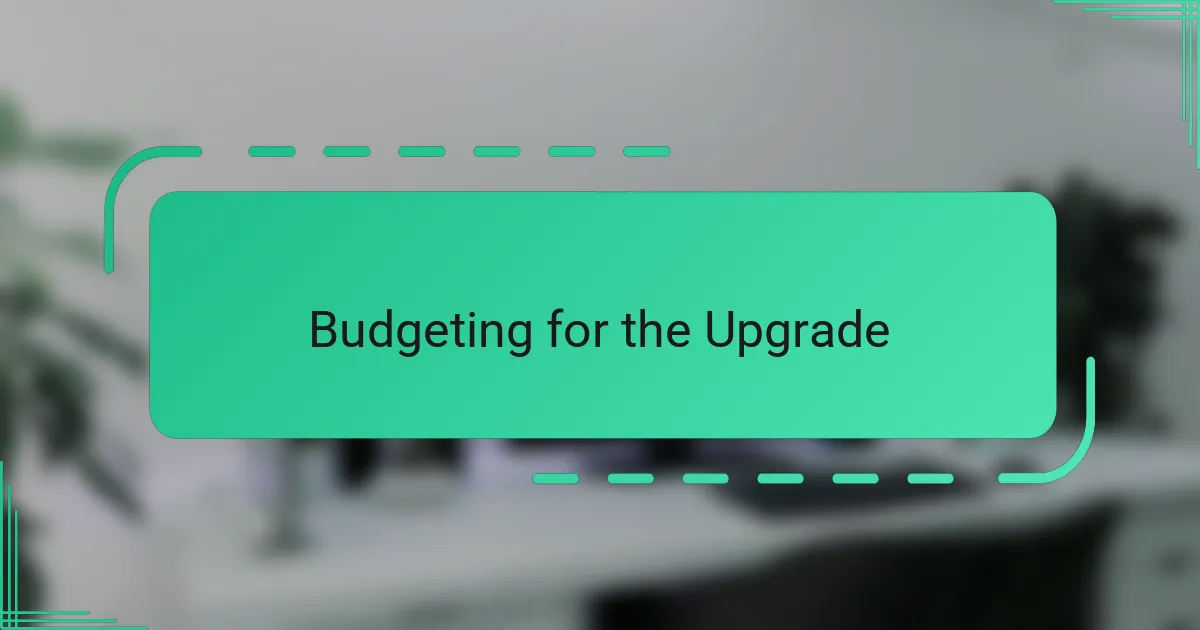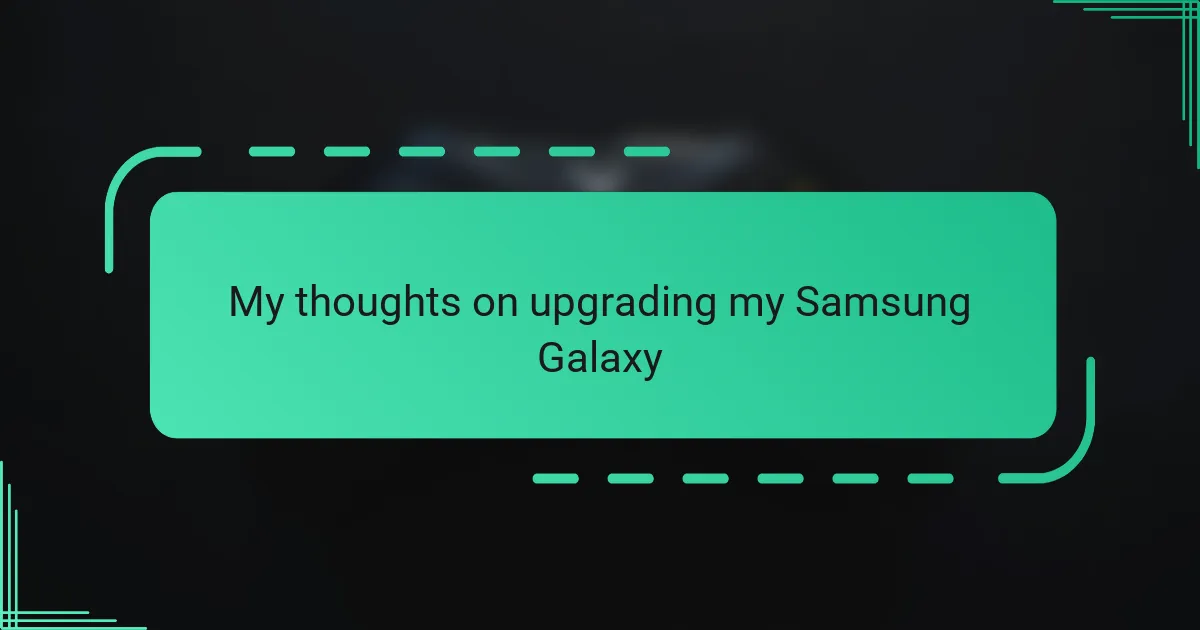Key takeaways
- Understanding Samsung Galaxy models requires evaluating personal needs and priorities, such as camera quality and performance.
- Considering upgrade benefits should focus on tangible improvements that enhance daily phone usage, rather than just specs.
- Budgeting plays a crucial role in the decision-making process, balancing desires for new features against financial constraints.
- Final upgrade decisions hinge on the practical impact of a new device on daily life, potential setup challenges, and cost justification.

Understanding Samsung Galaxy Models
Samsung Galaxy models have always fascinated me with their diversity. From the flagship S series to the more affordable A series, each line serves distinct user needs. It’s like choosing between a race car and a reliable family sedan—both impressive, but catering to different priorities.
Sometimes I find myself overwhelmed by the number of options Samsung offers. The Note series, with its signature stylus, appeals to my creative side, while the Fold series showcases innovation that feels almost futuristic. Have you ever wondered what it’s like to hold cutting-edge technology that bends in your hand?
Understanding these model differences has helped me appreciate what I truly want in a phone. It’s not just about the latest specs; it’s about how the device fits into my daily life. What features do you prioritize when thinking about an upgrade? Reflecting on that has made the decision clearer for me.

Evaluating Upgrade Benefits
When I evaluate whether upgrading my Samsung Galaxy is worth it, I start by weighing the tangible benefits against what I currently have. Is the improved camera performance or faster processor enough to justify the cost? For me, it’s never just about specs on paper; it’s about how those enhancements translate into my everyday experience.
I remember the last time I upgraded—I noticed an immediate difference in battery life and screen brightness that genuinely improved my day-to-day phone use. Those small perks built up quickly, making me feel the upgrade was more than just a splurge. Have you ever experienced that subtle but meaningful boost after switching to a newer model?
Of course, sometimes the best upgrade benefit isn’t a flashy new feature but the peace of mind that comes from reliability and smoother performance. When my phone starts lagging or draining fast, the frustration adds up. Upgrading can feel like reclaiming that smoothness and reset feeling, which, for me, is invaluable.

Assessing Current Device Performance
Assessing my current Samsung Galaxy’s performance always starts with noticeable slowdowns. Lately, apps take that extra moment to open, and switching between tasks feels less fluid. Have you ever caught yourself wondering if your phone’s sluggishness is a sign it’s time for something new?
Battery life is another telltale indicator. I recall just last week finding my phone barely lasting through an afternoon of regular use, which is frustrating when I’m out and can’t charge easily. When your device can’t keep up with your day, it really makes you question if sticking with the same phone is worth it.
Then there’s the issue of software updates. I’ve noticed some apps aren’t fully compatible anymore, and certain features that used to work flawlessly now feel buggy. It’s that creeping sense that your phone isn’t quite playing nice with the latest tech that nudges me towards considering an upgrade. Does your current device still feel like it’s in sync with today’s apps and needs?

Key Features of New Models
What really grabbed my attention in the new Samsung Galaxy models is the leap in camera technology. The latest sensors and AI enhancements promise sharper pictures and better low-light performance, which for me, makes a huge difference in capturing everyday moments without fuss. Have you ever taken a photo on a dull day only to be disappointed? These upgrades aim to fix exactly that.
Beyond cameras, the screen improvements stood out to me. The newer displays boast higher refresh rates and brighter colors, turning regular scrolling or video watching into something surprisingly vibrant and smooth. I found myself noticing small details—like how text flows effortlessly or how colors pop—that subtly changed my interaction with the phone.
Battery life also seems to be smarter, not just bigger. With adaptive power management, these models adjust usage based on what I’m doing, which I find both clever and practical. It’s a feature that often flies under the radar but quietly extends those crucial hours, especially on hectic days when charging isn’t an option. Have you ever wished your phone just lasted longer without constant worry?

Budgeting for the Upgrade
Budgeting for the upgrade feels like a balancing act to me. I ask myself, how much am I really willing to spend for those nifty new features? It’s tempting to go for the latest model, but setting a clear budget helps me avoid buyer’s remorse and keeps the decision grounded.
I remember the last time I upgraded, I laid out all my options and factored in trade-in values and deals. That made a huge difference, turning what felt like a splurge into a smarter investment. Have you ever tried breaking down the costs to see what fits best with your finances before committing?
Sometimes, I catch myself wondering if I’m chasing every shiny new release when a slightly older model might do just fine—and save some cash. That mindset helps me prioritize what truly matters versus what’s just a nice-to-have. What’s your approach when it comes to balancing wants and wallet?

Personal Criteria for Upgrading
When it comes to deciding on upgrading my Samsung Galaxy, I rely heavily on whether the new device genuinely meets my evolving needs. For me, it’s about finding features that align with how I use my phone daily—not just flashy specs that look good on paper. Have you ever felt that pull between wanting the newest gadget and needing practical improvements?
A big part of my criteria is the balance between performance boosts and actual usability. If a new model offers better multitasking or longer battery life that makes my hectic routine smoother, I consider that a win. But I’ve also learned to be wary of upgrades that promise a lot yet don’t deliver noticeable changes in my experience.
Lastly, I look at how much upgrading will disrupt my current setup. I’m always cautious about compatibility with apps I rely on and whether switching will mean a learning curve or data transfer headaches. Have you ever hesitated because the thought of starting fresh felt overwhelming? That sense of hesitation is a key factor in my decision-making process.

Final Upgrade Decision Factors
At the end of the day, the biggest factor nudging me toward an upgrade is whether the new phone will genuinely make my daily life easier or more enjoyable. It’s one thing to admire specs on a website, but another to ask myself: will this translate into smoother multitasking or longer battery life during those marathon workdays? I’ve learned that if the upgrade doesn’t offer a meaningful difference, it’s easier to hold off and make better use of what I already have.
Cost is an unavoidable piece of this puzzle, of course. I always find myself weighing the price tag against the perks—do the new camera features or brighter display really justify the hit to my wallet? Sometimes, I remind myself of past upgrades that felt like impulsive splurges, and that caution keeps me grounded. Have you ever felt torn between wanting the latest tech and not wanting to overspend?
Finally, there’s the practical side—the potential headaches of transitioning to a new device. I ask, how much effort will it take to set up, transfer data, and adapt to new software quirks? The thought of losing access to favorite apps or facing glitches has made me pause before. That friction is real, and for me, it’s a significant part of whether I decide to upgrade now or wait a bit longer.



